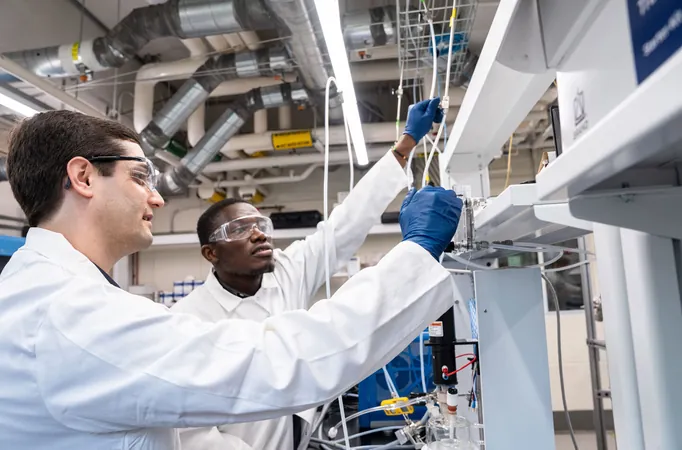
The Future of Clean Industry: Why Single-Atom Catalysts Need More Stringent Testing
2025-04-26
Author: Rajesh
As industries strive for cleaner and more efficient production processes, a revolutionary type of catalyst called the "single-atom" or "atomically dispersed" catalyst is gaining attention. These catalysts could fundamentally change how we produce essential materials, such as fertilizers, by enhancing chemical reactions without the drawbacks of traditional methods.
Crucial to many industrial processes, catalysts are substances that speed up reactions while remaining unchanged themselves. Unlike their traditional counterparts, single-atom catalysts promise unprecedented precision combined with robust performance. But with great potential comes the need for rigorous testing—and that’s where recent discussions in the scientific community are leading us.
A Call to Action in Catalyst Research
A significant push for rigorous testing in the field stems from a new perspective article by Jason Bates, a chemical engineer at the University of Virginia. After impressing an editor at Nature Chemistry with a peer review, Bates was invited to address pressing issues in single-atom catalyst research. His work emphasizes the need for thorough investigation to ensure that researchers don't overstate their findings.
"I hope to steer the direction of research toward credible results and fast-track genuine breakthroughs," Bates stated. His article, published in February, aims to expose the pitfalls researchers face in this groundbreaking but complex field.
Understanding Atomically Dispersed Catalysts
So, what exactly are atomically dispersed catalysts? They can be seen as the happy medium between homogeneous catalysts, which are precise but costly, and heterogeneous catalysts, which are robust but may degrade over time. By anchoring single metal atoms to a solid surface, these new catalysts promise both the specificity of homogeneous systems and the resilience of heterogeneous ones.
Bates insists that these catalysts have the potential to revolutionize industries—especially in processes like ammonia production that currently rely heavily on fossil fuels for hydrogen generation. "Whether it's through innovative hydrogen production techniques or other means, atomically dispersed catalysts could significantly lower carbon emissions in the industrial sector," he said.
Slow and Steady Wins the Race
Despite their allure, single-atom catalysts present challenges; their design and testing are intricate processes that require meticulous attention. Bates cautions that many researchers are rushing to publish, often neglecting the comprehensive characterizations needed for a full understanding.
"Research often resembles a jigsaw puzzle; it’s easy to misplace a piece and assume you see the complete picture," he noted. To build credible knowledge in this emerging field, researchers must adopt a more deliberate and methodical approach.
The Community Responds
Bates' call for more deliberate research is resonating within the scientific community. Feedback from peers, like Tufts University chemistry professor E. Charles Sykes, underscores the collective concern over the quality of recent studies in single-atom catalysts. Sykes agrees with Bates that the lack of thorough testing can hinder fundamental insights, advocating Bates' review as a guideline for the burgeoning research community.
As the demand for cleaner production methods escalates, the potential of atomically dispersed catalysts lies significantly in the rigor of ongoing research—an undertaking that promises not just innovation but a more sustainable future.



 Brasil (PT)
Brasil (PT)
 Canada (EN)
Canada (EN)
 Chile (ES)
Chile (ES)
 Česko (CS)
Česko (CS)
 대한민국 (KO)
대한민국 (KO)
 España (ES)
España (ES)
 France (FR)
France (FR)
 Hong Kong (EN)
Hong Kong (EN)
 Italia (IT)
Italia (IT)
 日本 (JA)
日本 (JA)
 Magyarország (HU)
Magyarország (HU)
 Norge (NO)
Norge (NO)
 Polska (PL)
Polska (PL)
 Schweiz (DE)
Schweiz (DE)
 Singapore (EN)
Singapore (EN)
 Sverige (SV)
Sverige (SV)
 Suomi (FI)
Suomi (FI)
 Türkiye (TR)
Türkiye (TR)
 الإمارات العربية المتحدة (AR)
الإمارات العربية المتحدة (AR)